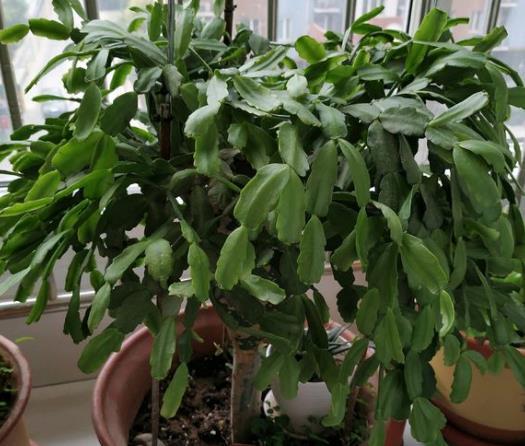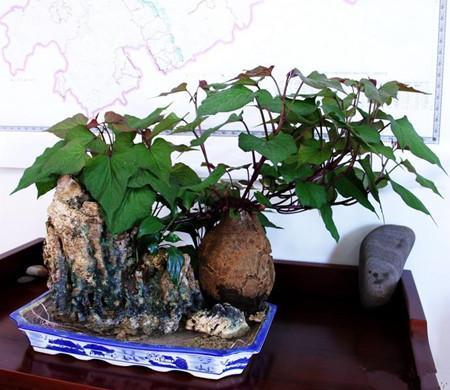Throw some of this into the crab claw orchid basin in October. The root system grows vigorously and blossoms constantly.

In October, flower friends can raise a pot of crab claw orchids on the balcony, which is the peak season for raising crab claw orchids and longevity flowers. The culture environment of crab claw orchids requires semi-cloudy and humid, avoiding hot sun and rain in summer, and warmth and sufficient light in winter. In the process of maintenance, we can bury something in the basin so that the crab claw orchid can absorb nutrients, which will be introduced below.
In October, throw some of this "thing" into the crab claw orchid pot, and the roots grow vigorously and keep blooming!
This "thing" is soybean dregs and eggshells, soybean dregs to make flower fertilizer must take a certain amount of time to ferment, there are two kinds of fermentation methods, soil fermentation and soaking water fermentation. Soil buried fermentation is to bury the bean dregs in the basin soil, cover the bean dregs with the soil layer, and let the bean dregs ferment naturally in the soil. When the temperature is high (such as summer), it can be fermented in a month or two, while when the temperature is low, it takes more time.
Fermentation can be used to put on the basin of crab claw orchid, soybean residue contains nutrients, such as a large amount of nitrogen fertilizer, can provide crab claw orchid, longevity flower, rose and other flowers to grow, so that the root system of the plant grows exuberantly and blossoms continuously. Bean dregs is an excellent fertilizer, non-alkaline, although it is the residue after grinding and extracting juice, it still contains a considerable part of protein, vitamins and carbohydrates. After artificial treatment, it is the most suitable for seedling growth.
For the watering problem of crab claw orchid, the amount of water should be controlled according to different seasons. Although winter is the growing season, but because of the low temperature, it is not suitable for much, as long as keep the basin soil moist, not too dry, generally watering once every four or five days. The summer temperature is high, although the sun shade, the basin soil is still easy to dry, generally watered once a day.
Crab claw orchid is a short-day plant, which can blossom in February to March under the condition of 8-10 hours of light every day. It should be shaded from May to September, maintain a light rate of 50%, and give plenty of sunshine after October. The sun can't shine directly in the dry and hot summer. The most common method of crab claw orchid reproduction is cutting, the method is very simple, is to take a few pieces of paper before cutting, the survival rate is very high.
A flower friend asked, crab claw orchid has been raised for several years, from a small node to a big plant, but why has it not blossomed? Generally, there are not enough nutrients, so the soil should be changed every year. Summer is the season when it is dormant. Remember to water less, change the pot soil in autumn, and add a little fertilizer.
There is another thing that can be used to raise crab claw orchid, green pineapple, rose and other plants, that is, eggshell. We wash the eggshell and put it outside to dry. After one or two days, the eggshell becomes dry and crisp. After mashing, remove the mud from the surface of the flowerpot and bury the mashed eggshell. Mix well according to the proportion of 1 eggshell powder and 3 portions of potted soil, then fill it with soil and let it absorb slowly.
- Prev

Put a sweet potato in a pot for 30 days and grow it into a potted plant. It is more beautiful than green radish. The more you look at it, the more you like it.
Balcony vegetables are actually very simple, in advance to investigate the environment of your balcony, planning area to grow vegetables, the home does not need utensils can be used to grow vegetables, in addition, the drainage performance of the sack is good, it is a good vegetable growing equipment.
- Next

recommend| These 6 kinds of flowers must not be addictive and cannot be quit
Some green plants are easy to be addicted, unconsciously become spiritual dependence, accompany you all the way, accompany you to grow together, let you slowly remove the pressure, sink your mind, and re-find the fun of life and the meaning of life! 1 turtle...
Related
- Wuhan Hospital Iron Tree Blooming Result Was Instantly Frightened by the Gardener Master
- Which variety of camellia is the most fragrant and best? Which one do you like best?
- What is the small blue coat, the breeding methods and matters needing attention of the succulent plant
- Dormancy time and maintenance management of succulent plants during dormancy
- Minas succulent how to raise, Minas succulent plant pictures
- What are the varieties of winter succulent plants
- How to raise succulent plants in twelve rolls? let's take a look at some experience of breeding twelve rolls.
- Attention should be paid to water control for succulent plants during dormant period (winter and summer)
- Watering experience of twelve rolls of succulent plants
- Techniques for fertilizing succulent plants. An article will let you know how to fertilize succulent plants.

